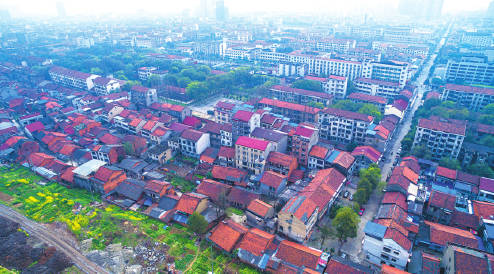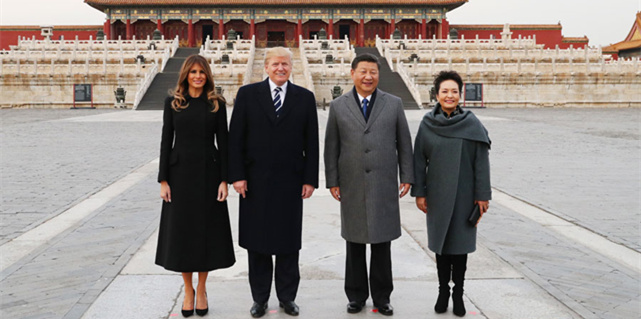From rubble, art and new life spring
 |
|
The shantytown on the right bank of Changde's Yuanshui River in Hunan province will be demolished and replaced by new housing in six to eight years. [Photo provided to China Daily] |
As her daily routine begins, Xu Hui walks past the debris of demolished homes in a shantytown in Changde, Central China's Hunan province, her mission being to ask people living in the area whether they are willing to move away from it.
Xu expects that once generous compensation is dangled before them, her interviewees are likely to jump at the chance to move away from the area, notorious for its human congestion and filth. Yet running against that expectation is the fact that nearly all of the 200 families or so whose homes are due to be next on the chopping block have chosen to stay and buy the new houses that will be built in their place.
Xu attributes this change of heart among locals about where they live to an art show in a newly built art center in the shantytown in September. On display were works by artists in an art project aimed at helping preserve the collective memory of the area, where the locals have lived for decades. Many of the artworks will eventually be placed in public spaces established in the area once the new houses are built.
"When people saw the show and the fancy art center, they were dumbstruck," says Xu, 40, who has lived in the shantytown for more than 10 years and works for a local community committee. "They then began telling me that they wanted to stay."
Like most residents living in Changde, a prefecture-level city with a population of 5.7 million, Xu had previously had little interest in art, something she equated to local operas or square dancing, a popular pastime throughout China.
Winding through the city is the Yuanshui River, on whose left bank is a well-off area that has flourished over the past 10 years as a result of urbanization. The other side of the river has not fared nearly as well, and it is there that the shantytown sits. As the disparity between the two sides of the river became ever more apparent, the local government decided to act last year, and it is as a result of this that the shantytown area is literally being rebuilt from the ground up.
"Urbanization in China is advancing at an incredible pace, and old buildings make way for new ones every day," says Hu Quanchun, a sculptor who specializes in public works. "But making art a part of the process of urbanization is rare."
Hu says that when he visited Changde to take part in a one-month residential art project in March and April he had barely any idea about how to get started. For him, the area seemed to be much like any other small city in China, with rows of apartments and two-story houses, narrow alleys and a lot of debris lying everywhere, the remnants of demolished houses.
















